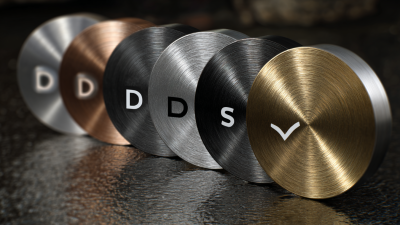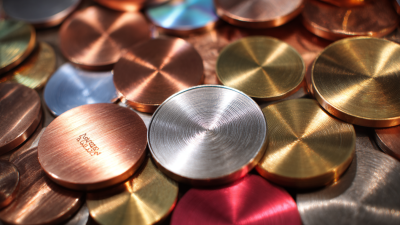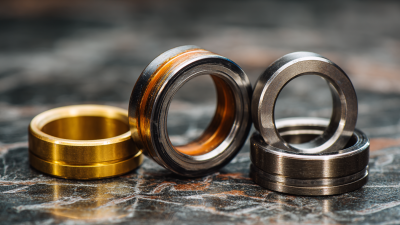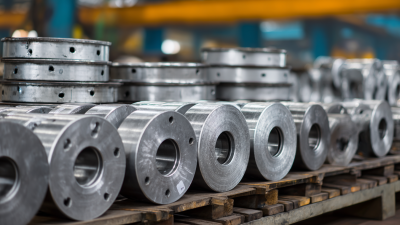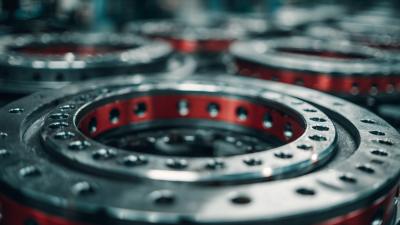When it comes to engineering applications that require precision and durability, the choice between thick metal discs and thin metal circles can significantly influence performance outcomes. Thick metal discs offer advantages such as increased strength, stability, and the ability to withstand higher pressures and temperatures, making them suitable for heavy-duty applications in industries like aerospace and manufacturing. On the other hand, thin metal circles provide benefits like reduced material usage and lighter weight, which can be advantageous in applications where efficiency and cost-effectiveness are paramount. In this blog, we will explore the key differences between these two types of metal components, delve into their respective benefits, and highlight how their unique properties impact performance in various applications. Understanding these distinctions will aid engineers and product designers in making informed decisions tailored to their specific needs.

The distinction between thick metal discs and thin metal circles is crucial in various applications, particularly in fields like engineering and manufacturing. Thick metal discs, characterized by their density and structural integrity, offer enhanced durability and strength. These qualities make them suitable for heavy-duty applications, such as mechanical components in machinery, where resistance to stress and deformation is essential. Their robustness allows them to perform efficiently in environments requiring high durability, such as aerospace and automotive industries.
Conversely, thin metal circles are favored for applications where lightweight and flexibility are paramount. These components are often used in areas that demand precision and ease of installation. For instance, they can be found in electronic devices and consumer products where minimizing weight without compromising functionality is critical. In addition, the manufacturing processes for thin metal circles tend to be more cost-effective due to their material efficiency, which can be advantageous in mass production scenarios. Understanding these key characteristics enables professionals to select the appropriate type of metal component based on performance requirements and application demands, promoting efficiency and effectiveness in their projects.

Thin metal circles are increasingly recognized for their versatility and efficiency across various industries. Their lightweight nature and ability to be manufactured with precision make them ideal for applications in sectors such as aerospace, automotive, and electronics. According to a recent industry report by MarketsandMarkets, the global demand for thin metal products is projected to grow at a compound annual growth rate (CAGR) of 4.5% from 2022 to 2027, driven largely by innovations in material science and manufacturing techniques.
In the aerospace sector, thin metal circles are employed in the production of components where weight reduction is crucial for fuel efficiency. For instance, the use of thin aluminum discs can help reduce aircraft weight by up to 30%, significantly improving fuel performance.
Similarly, in the electronics industry, thin metal circles serve as critical components in devices requiring efficient thermal management and electrical connectivity. A report by Mordor Intelligence highlights that the electronics segment's demand for thin metal circles is expected to increase by 5.8% annually, reflecting the continuous miniaturization of devices and the corresponding need for thinner materials that maintain strength and conductivity.
When comparing thick metal discs to thin metal circles, one of the most critical factors to consider is the impact of thickness on performance metrics such as durability and strength. According to a report by the American Society for Testing and Materials (ASTM), thicker metal discs generally exhibit enhanced load-bearing capacity and resistance to bending. Specifically, a study showed that discs with a thickness increase of 50% can withstand nearly 70% more stress before failure, making them ideal for applications where high durability is paramount.
However, while thick metal discs offer superior strength, they can also be heavier and less versatile in applications requiring precision and lightweight components. For instance, the Precision Metalforming Association (PMA) states that thin metal circles are often preferred in industries like electronics and automotive manufacturing due to their lightweight properties and ease of handling. This indicates that the choice between thickness ultimately depends on the specific requirements of the application.
Tip: When selecting metal discs, consider the application's stress requirements and weight limitations. For projects prioritizing strength, opt for thicker designs. Conversely, if agility and ease of installation are key, thin metal circles might serve better. Additionally, consulting manufacturer specifications can provide insights into the best material choices for your needs.
When comparing thick metal discs and thin metal circles, cost efficiency plays a crucial role in determining the right choice for various applications. The production processes and material expenses associated with each can significantly influence overall project budgets. Thick metal discs often require more raw material and energy-intensive manufacturing methods, which can lead to higher costs. In contrast, thin metal circles tend to utilize less material and can be produced more efficiently, making them a cost-effective option for manufacturers aiming to optimize expenses.
Tips for cost-saving: Consider investing in advanced technology for production, such as laser cutting, which can minimize waste and reduce the amount of raw material needed. Additionally, evaluate the project's specific requirements to determine if a thinner profile would meet performance standards, thereby cutting costs without compromising quality.
It's also important to factor in long-term performance and durability when assessing costs. While thin metal circles may be cheaper upfront, their longevity in demanding applications could result in additional expenses over time if replacements are needed. Therefore, weighing initial costs against potential long-term savings is essential for making informed decisions.
When selecting the appropriate thickness for metal discs or circles, several key design considerations come into play. The environment in which the metal will be used significantly influences the decision-making process. For instance, thicker metal discs might be favored in high-stress applications where durability and resistance to wear are crucial, such as in machinery components and structural support. On the other hand, thin metal circles can be ideal for applications that require lightweight materials or involve intricate designs, like in decorative items or electronic devices.
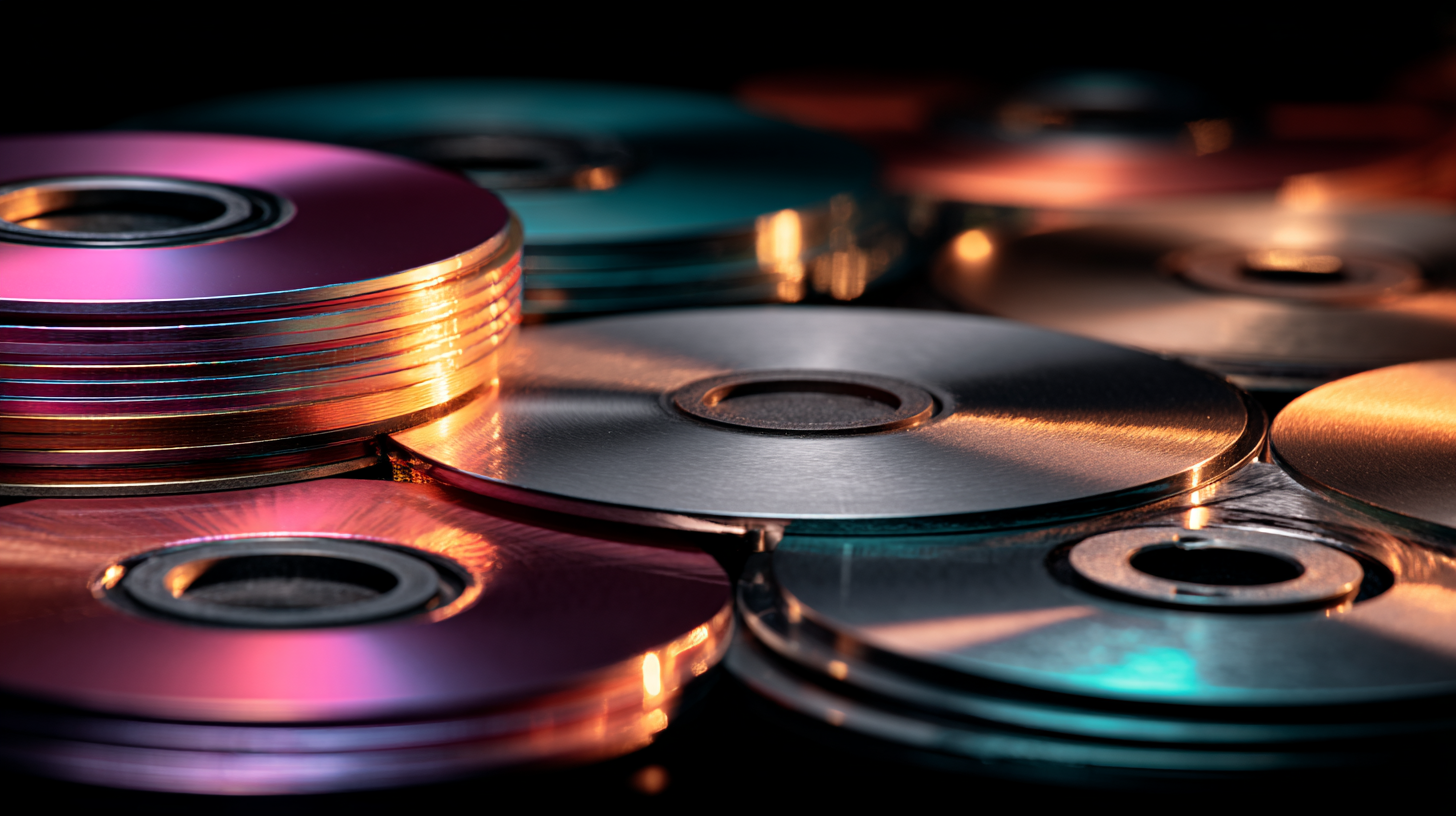
Another critical factor is the thermal and electrical conductivity of the metal. Thicker discs typically provide better overall thermal stability, making them suitable for heat dissipation applications. Conversely, thin discs can offer enhanced flexibility and are easier to manipulate, making them perfect for applications like heat exchangers or where rapid temperature changes occur. Lastly, the cost implications must also be considered; thicker materials often involve higher expenses, not only in terms of raw material costs but also in fabrication and handling. Thus, understanding the specific requirements of a project is essential for selecting the right thickness that balances performance, cost, and design.
